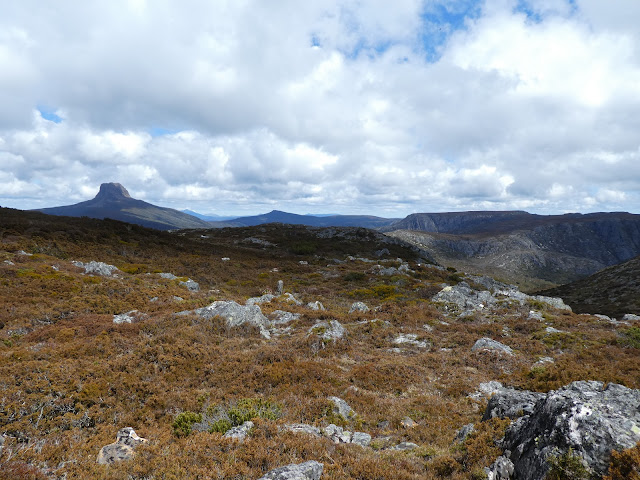Walking the Three Capes track on Tasmania's southern Tasman Peninsula is like following a four day art sculpture trail - natural sculptures of cliffs and trees, and man-made sculptures in the form of seats and other trail features embedded with stories of the landscape, and of nature and human history.
There are 40 'Encounters' or 'Story Seats' placed along the 48 km trail, their stories are told in the small booklet each walker is given when checking in at Port Arthur, where the boat takes us on a wildlife cruise to the mouth of the harbour, past Point Puer where young convict boys were imprisoned, below cliffs inhabited by cormorants lined up along ledges loftily regarding us beneath them, looking far smarter in their black and white dinner suits than me in a faded red one-size-fits-all poncho for wind and sea spray protection.
Our boat guide talks constantly during the hour long cruise past the golden sands of Crescent Beach, a seal floats lazily in a kelp bed, with views west to the jagged outline of Cape Raoul and east to the lighthouse perched high on Tasman Island. Then we are deposited on the beach in Denmans Cove opposite Port Arthur.
The first day of walking is an easy 4 km through dry scrub with the sea sighing gently beneath us. We are greeted by Surveyors Hut, with majestic views of Cape Raoul, which we share with seven other walkers who we will meet up with each evening. When the huts are at full capacity they can sleep 48 people, so we are very privileged to have low numbers and a room to ourselves. We sleep on comfy mattresses, carry our sleeping bags and all our own food which we cook on the gas stoves in the shared kitchen area. S beats me at Scrabble after dinner while we listen to one of the other walkers playing a guitar provided by the resident ranger.
Social distancing rules apply.
Day two dawns cool and dry. We walk 11 kms through coastal heathland and dry gum forest. Did you know it can take up to 16 days for a wombat to digest its food and produce the cubed-shaped droppings that inspired these seats?
The cliffs become higher and the views wider.
Tonight's hut nestles in the forest on the cliff top overlooking Munro Bay, the location of four shipwrecks.
Not a bad view from the deck! Cape Huay in the distance.
Sunrise on day three.
Today we leave most of our stuff at Munro while we walk to Cape Pillar and back, and then on to to Retakunna Hut, a total of 19 kms and a lot of steps and wind.
Wind sculpted banksia.
My blood runs cold. The longest boardwalk I have ever walked, snakes through teatree marshland, and across the hills for what feels like about two kms, referencing Tasmania's three venomous snakes.
Sitting down seems like a good idea on a windy cliff top.
The ski-jump shape on the cliff top to the left of Tasman Island is called The Blade. It is narrow and steep and we will climb it.
The view from The Blade.
Zooming in on Tasman Island my camera shows me the highest operational lighthouse in Australia, 276 metres above sea level, 29 metres high, automated in 1977, visible for up to 72 kms. The three five bedroom houses once housed the lighthouse keepers and their families.
Awesome - full of awe - describes this place.
After walking to the end of Cape Pillar, we return to Munro, collect our packs and then it is a short walk through the forest to Retakunna, which means creaking trees in the local palawa language. Tonight I beat S at Scrabble while the wind dumps heavy rain outside.























































